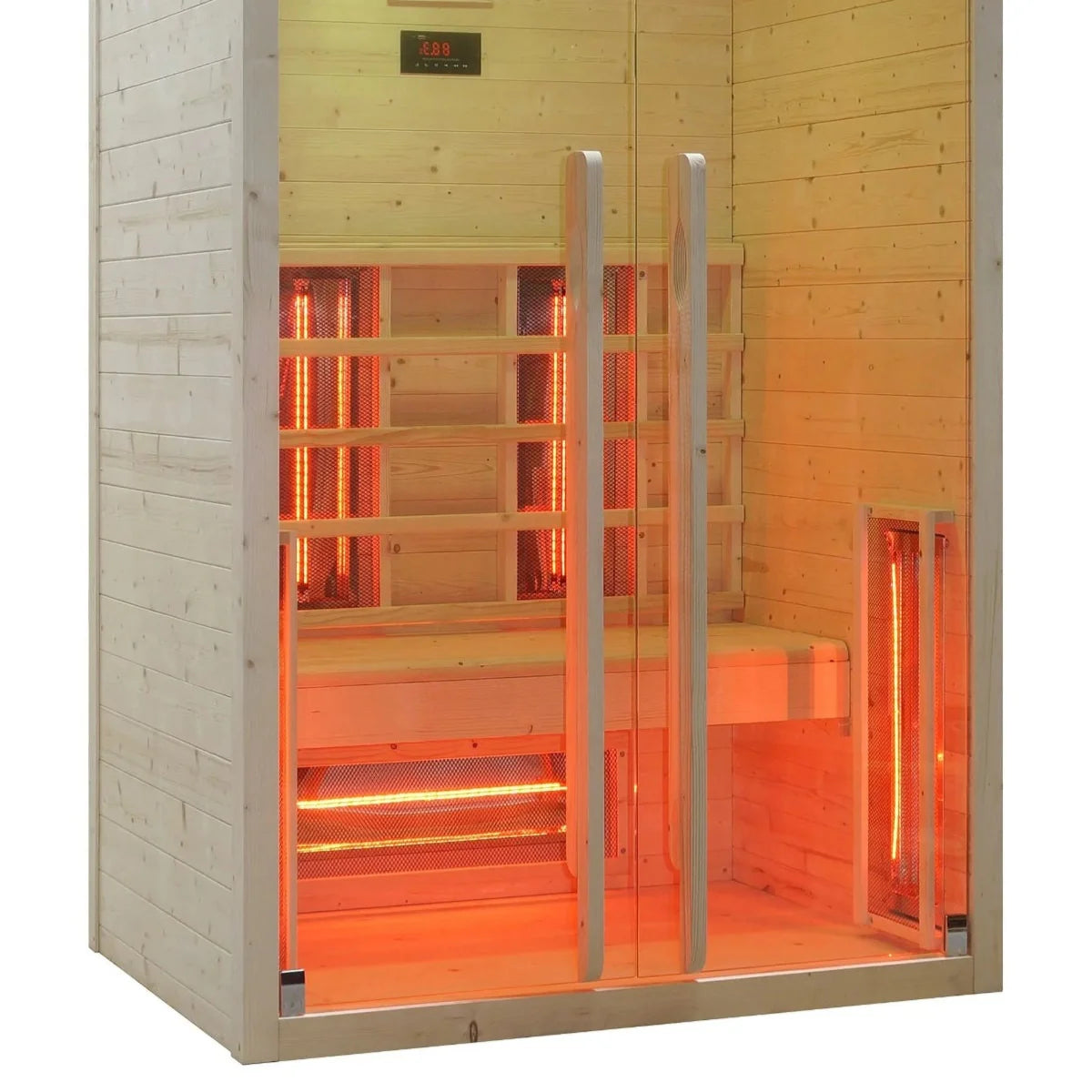Thinking of zapping your wrinkles or sore knees with light? Short answer: Yes, red light therapy works—if you’ve got the right setup. From Red Light Therapy at home to Red Light Therapy Panels and even Red Light Therapy Beds, we break down what’s worth it. Stick around to see what actually gets glowing results.

What is Red Light Therapy (RLT)?
Red Light Therapy (RLT) is a non-invasive treatment that uses specific wavelengths of red and near-infrared light to stimulate cellular activity. It's commonly used to support skin health, pain relief, and tissue repair.
RLT works by penetrating the skin’s layers and reaching the cells. It’s completely painless and doesn’t involve heat, cutting, or downtime.
How RLT Works (Mechanism of Action): Mitochondria, ATP production, cellular repair, collagen and fibroblast stimulation, increased circulation, reduced inflammation
RLT targets the mitochondria—the powerhouse of the cell.
Light energy is absorbed and used to produce more ATP (adenosine triphosphate), which fuels cell repair and regeneration. This encourages collagen and fibroblast activity, enhancing skin structure and elasticity.
Red light also promotes increased blood flow and reduced inflammation, helping speed up healing and soothe pain. The result? Healthier, stronger cells that function more efficiently.
Other Names for Red Light Therapy: Low-level laser light therapy (LLLT), photobiomodulation (PBM), cold laser therapy, soft laser therapy
RLT goes by a few different names:
-
Low-Level Laser Therapy (LLLT)
-
Photobiomodulation (PBM)
-
Cold Laser Therapy
-
Soft Laser Therapy
They all refer to similar technologies that use light to trigger biological changes in the body.
Proven Benefits and Applications of Red Light Therapy

Skin Health and Anti-Ageing
Reducing wrinkles and fine lines
RLT helps smooth out fine lines and wrinkles by stimulating collagen and elastin production. It supports skin renewal and firmness.
Improving skin complexion and texture
Users often report brighter, more even-toned skin with consistent use. It helps fade dark spots, reduce discolouration, and smooth roughness.
Treating acne and other inflammatory skin conditions
Red light reduces redness and inflammation linked to acne, psoriasis, eczema, and rosacea. It also helps calm skin and prevent flare-ups.
Accelerating wound healing and reducing scarring
The therapy encourages faster healing by increasing circulation and cell turnover. It can minimise the appearance of new scars and support tissue repair.
Boosting collagen and elastin production
Red and near-infrared light stimulate fibroblasts, which are essential for producing collagen and elastin. This leads to firmer, plumper skin.
Hair Growth
Treating hereditary hair loss (androgenetic alopecia)
RLT is gaining popularity for treating thinning hair. Studies suggest it may slow hair loss and promote regrowth in people with genetic hair thinning.
Stimulating hair follicles and increasing hair thickness
By energising dormant follicles and improving blood flow to the scalp, red light can thicken existing strands and support healthier hair cycles.
Pain Relief and Muscle Recovery
Reducing inflammation and soreness
RLT helps reduce joint pain and stiffness linked to arthritis, tendinopathy, fibromyalgia, and general muscle aches. It eases swelling and enhances comfort.
Enhancing post-exercise recovery
Many athletes use red light to recover faster after workouts. It reduces muscle fatigue, speeds up repair, and helps maintain performance.
Other Potential Benefits (Emerging Research)
Cognitive function (dementia)
Preliminary research shows promise for improving cognitive clarity and memory in people with dementia. However, more studies are needed.
Sleep improvement
Some evidence suggests RLT may regulate melatonin production and circadian rhythm, promoting better sleep.
Considerations Before Starting Red Light Therapy

At-Home Devices vs. In-Office Treatments
Efficacy differences
Professional treatments are often more powerful and can deliver results faster. At-home options are more convenient and cost-effective but may take longer to work.
Types of devices
There’s a wide range of tools:
-
Masks: Good for facial skin
-
Wands: Spot treatment for pain or blemishes
-
Panels: Full-body sessions
-
Caps/Helmets: For scalp and hair regrowth
Wavelengths and intensity
Wavelengths between 630–850nm are considered most effective. Red light (visible) targets skin and collagen, while near-infrared (invisible) penetrates deeper into muscle and joints.
Safety and Side Effects
FDA clearance (safety vs. effectiveness)
Many devices have FDA clearance for safety, but this doesn’t always confirm how effective they are. It’s important to buy from reputable brands.
Potential risks
Red light is generally safe but can cause issues if misused. Overexposure may lead to skin sensitivity. People with darker skin tones should monitor for hyperpigmentation.
Importance of professional consultation
It’s best to consult a dermatologist or healthcare provider—especially if treating a medical condition or using other therapies.
Treatment Protocols and Expectations
Recommended session length and frequency
Sessions typically last 10–20 minutes. Most users benefit from 3–5 sessions per week for the first month, then adjust based on progress.
Variability in results
Results vary by individual, condition, and consistency. Some people notice changes in a few weeks, others may take longer.
Cost and insurance coverage
In-office treatments range from £30–£100 per session. At-home devices vary from £100 to over £1,000. Most are not covered by NHS or insurance.
Long-term safety and effectiveness
RLT appears safe for long-term use, but more data is needed on chronic exposure. Following guidelines helps ensure ongoing benefits without risks.
Takeaways:
-
Red light therapy supports skin, pain relief, hair growth, and more
-
It works by boosting ATP production and reducing inflammation
-
At-home and in-office options differ in power and results
-
Consistency is key—most see best results after several weeks
-
It’s safe when used properly, but consult a professional before starting






